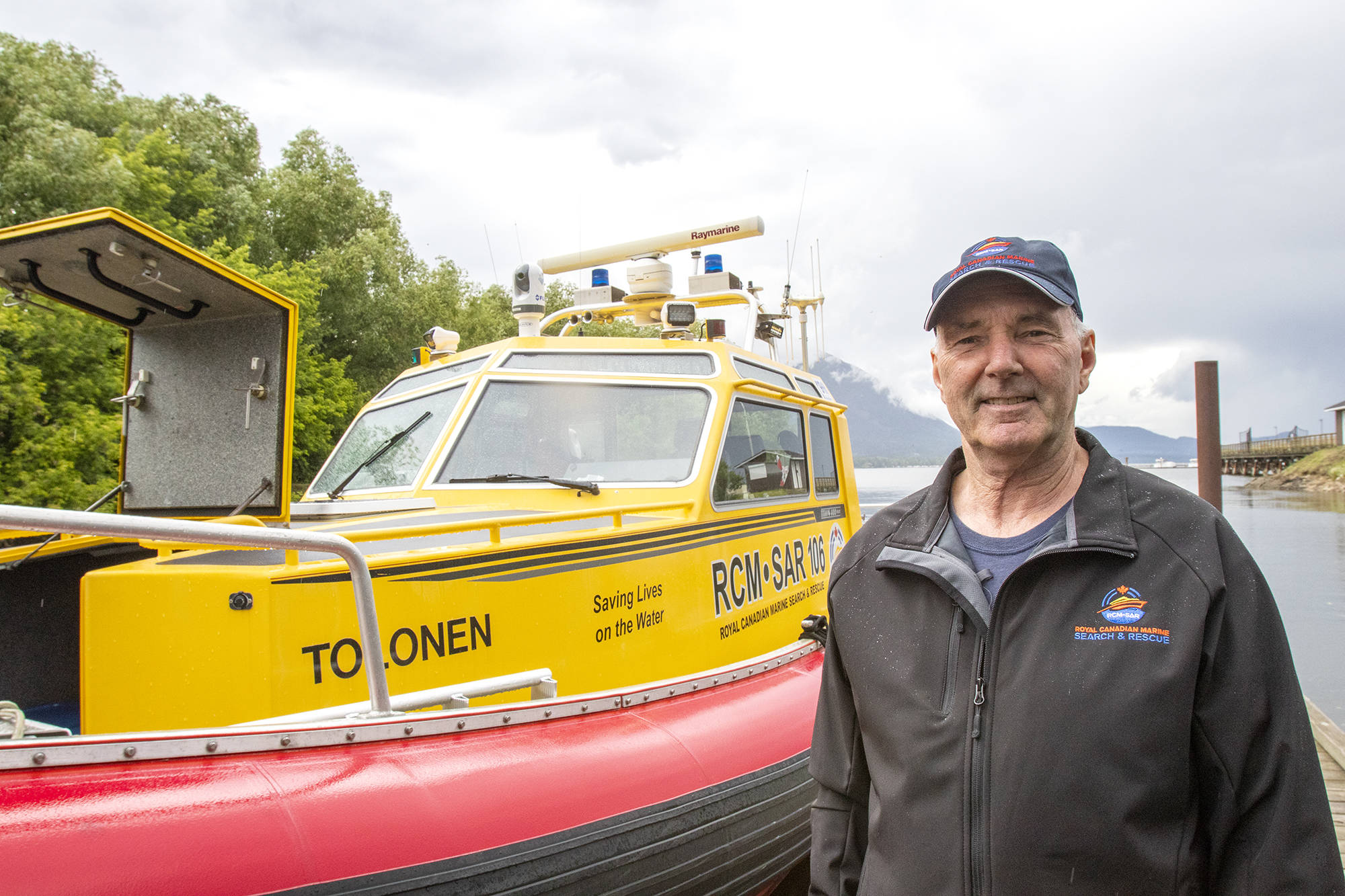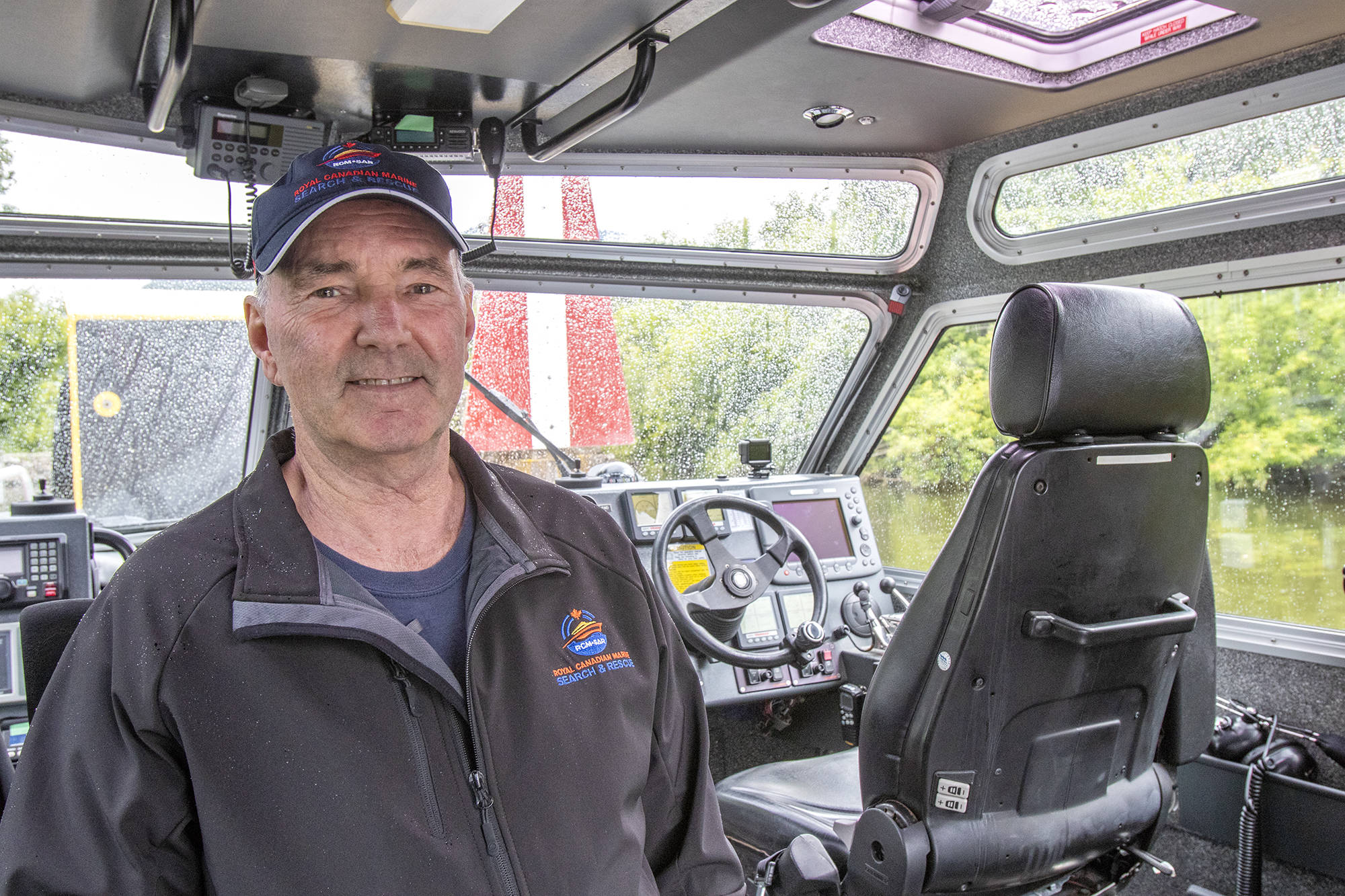Members of the Royal Canadian Marine Search and Rescue Station 106, who conduct rescue missions and boating safety checks in the Shuswap, were out at the Marine Park in Salmon Arm June 13 to showcase their newest asset.
The station’s new rescue boat, a 2007 40-foot Titan Rigid Inflatable rescue craft, comes packed with much-needed features for conducting rescue missions on the water. According to station leader Rob Sutherland it’s a welcome upgrade to their fleet and will revolutionize their ability to respond quickly and effectively to emergency calls on Shuswap Lake.
“It’s a fast response vessel, has twin diesel engines in it that can go up to 50mph, at full speed of course. The speed is always based on weight and how many people are in the boat, but It cruises with any weight in it at about about 41mph, so we can get from point A to point B pretty fast,” Sutherland says. “In the front there is space for two critically injured casualties. The boat is set up like an ambulance so it has all the same stuff and it can take up to 30 people in this boat for mass casualty evacuations.”
Compared to their older boat, a 1989 Guardian Whaler, the new craft is a night-and-day difference. It is equipped with high-tech navigation and detection gear including radar screens, course-plotting hardware, dedicated radios as well as thermal and infrared imaging to detect those in need of rescue in low-visibility conditions such as at night or in a heavy storm.
Sutherland says their station’s area of operation takes them out to Anstey Arm and Seymour Arm on a regular basis, notably to respond to calls in areas that are only accessible from the water such as vacation homes and fishing cabins. To get to Seymour Arm by highway would take an ambulance over two hours from Sicamous, where the station is based, and this new rescue craft can make that trip in a fraction of the time.
During the open house event, the members of Station 106 were also showcasing the safety supplies that boats on the water are expected to be carrying at all times. While these requirements vary for different types of boat, nearly all craft are required to include life jackets for each person on board, lines for tying off, a fire extinguisher and signalling devices such as flashlights, flares, air-horns or radios.
They also showed off what is perhaps their most high-tech piece of equipment: a drone equipped with thermal imaging that has the ability to locate people on the water and even air-drop life jackets or other supplies to them.
The members of Station 106 have taken their new Titan boat out on two missions since acquiring it, and Sutherland says it has proven its usefulness already.
@Jodi_Brak117
jodi.brak@saobserver.net
Like us on Facebook and follow us on Twitter.

